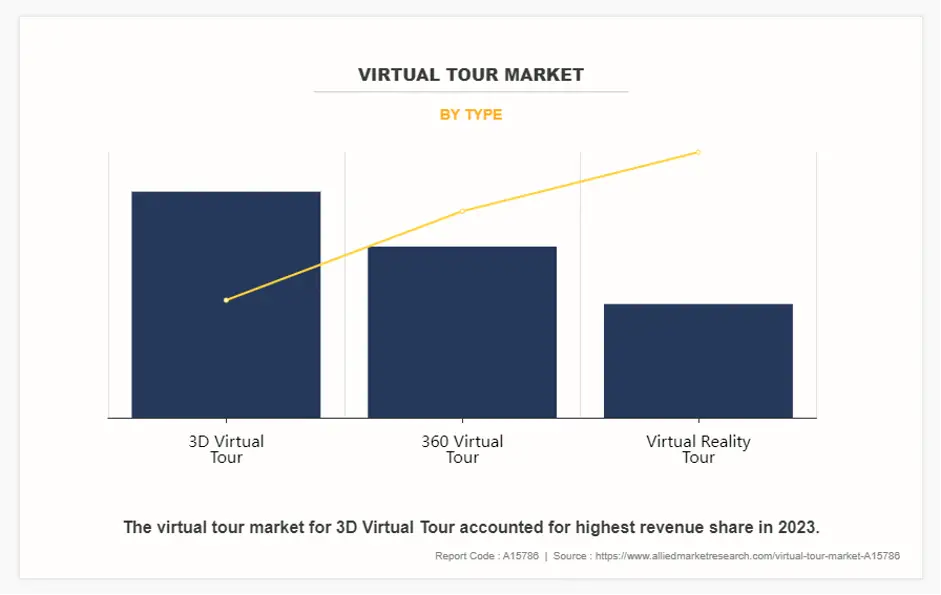Engage and Convert: How 3D Product Modeling Impacts Customer Choices
![Engage and Convert: How 3D Product Modeling Impacts Customer Choices [node:title]](/sites/default/files/styles/wide/public/3D%20Product%20Modeling%20Impacts%20Sales.jpeg?itok=kNnvXqQs)
In a world where scrolling is endless and attention spans are fleeting, how do you make your product stand out? This is possible with Augmented Reality and 3D product modeling. These technologies not only let users view products in a virtual space, but also allow them to experience them with immersive realism.
With over 60% of social app users projected to use AR by 2025, and 84% preferring AR interactions before purchasing, brands have a golden opportunity to redefine customer engagement and conversions.
If you're not harnessing 3D product modeling, you risk being left behind in a competitive space that demands innovation. Let’s explore how 3D product configurators can help you improve customer engagement and sales in the long run.
Why 3D Product Modeling Over Product Photography - Key Benefits
I. Cost-Effective in the Long Run
While the initial investment in 3D modeling software and skilled personnel might seem steep, the long-term savings are significant. Eliminating the need for repeated photoshoots reduces costs associated with photographers, studio rentals, equipment, and logistics. For companies that update their product lines frequently or offer extensive customization options, these savings can be substantial.
II. One 3D Asset, Infinite Creative Possibilities
3D configurators provide great flexibility as they can be used for multiple purposes, such as social media campaigns, website integration, virtual tours, eCommerce platforms, email marketing, product animations, and marketing copies.
Imagine being able to showcase a new sneaker design from every conceivable angle, under different lighting conditions, and in various color schemes—all without having to physically produce multiple prototypes or organize complex photoshoots. This level of flexibility is possible with 3D products. Designers can tweak materials, textures, and features in real time, allowing for rapid iterations based on market feedback or creative inspiration.
III. Accelerated Time to Market
In industries where timing is crucial—like fashion or technology—the ability to get products in front of consumers quickly can make or break a season. 3D models can be created concurrently with product development, allowing marketing materials to be ready as soon as the product is finalized. This synchronicity shortens the gap between product completion and market launch, giving companies a competitive edge.
IV. Immersive Customer Experience
Interactive 3D models provide a more engaging customer experience than static images. Consumers can zoom in, rotate, and explore products in a way that static photography can't match. This level of engagement not only keeps potential buyers on your site longer but also increases the likelihood of conversion. For example, automotive companies now offer virtual showrooms where customers can customize and examine vehicles in detail without stepping foot in a dealership.
V. Reduced Product Return Rate
By providing an interactive and detailed representation of products, 3D models help customers make more informed purchasing decisions to minimize the chances of product return. Shoppers can examine items from every angle, zoom in on specific features, and even see how products function in real-life scenarios. This level of detail sets accurate expectations, minimizing surprises upon delivery.
How Various Industries Leverage 3D Product Modeling for Enhanced Customer Engagement and Sales
Due to its various benefits and cost-efficiency, 3D product modeling and rendering is gaining traction among various sectors (both B2B and B2C sectors). Let’s see how businesses leverage 3D configurators for enhanced customer engagement in different domains with some real-world examples:
1. Manufacturing
In the manufacturing sector, 3D product modeling is revolutionizing customer engagement by making complex products more accessible and understandable. Companies are utilizing interactive 3D models to showcase product features, customization options, and operational functionalities without the need for physical prototypes.
For example, Siemens Energy utilizes 3D product modeling and additive manufacturing technology to present their advanced gas turbines to potential clients. By providing interactive 3D configurators, they enable customers to explore intricate turbine components, simulate performance under various conditions, and understand maintenance procedures.
2. Real Estate
Realtors leverage 3D modeling to create immersive virtual tours, enabling potential buyers to explore properties remotely from every angle. This technology allows clients to visualize spaces in detail, including furniture placement and architectural features, enhancing their understanding of the property.
In fact, several studies have suggested that listings with virtual tours significantly increase conversion rates by offering a more detailed and interactive view than traditional listings.

Image Source: Allied Market Research
One prime example of a real estate company using 3D configurators for customer engagement is Zillow. The platform has integrated 3D home tours into its listings, allowing users to navigate properties as if they were walking through them.
3. Automotive
In the automotive sector, 3D product modeling enhances customer interaction with vehicles before they even step into a showroom. Car manufacturers offer online 3D configurators where customers can customize models with different colors, wheels, and interior options.
BMW's Virtual Viewer is a prime example, allowing users to personalize vehicles and view them from any angle in high-definition detail. This level of engagement not only excites customers but also increases the likelihood of purchase by allowing them to visualize their ideal car in real-time.
4. eCommerce
eCommerce is one such sector where AR and 3D product modeling are making the most impact. Through 3D product animations and virtual product try-ons, customers can interact with online products—rotating, zooming, and seeing them in use. 3D modeling for eCommerce bridges the gap between online shopping and the tactile experience of in-store purchasing, helping buyers to make more informed decisions.
From Walmart to Ikea, all the major eCommerce players are capitalizing on 3D configurators to boost engagement and conversions. Amazon has also introduced an AR feature called “View in Your Room” for customers purchasing larger items like furniture. By simply tapping the icon, users can rotate and position a realistic 3D model, ensuring both fit and style align with their expectations before purchasing.
Case Study: How a Footwear eCommerce Retailer Achieved 20% Increased Conversion Rate with 3D Product Modeling
The company deals with various kinds of shoes (formal, casual, athletic, and specialty shoes), and to give their sellers a better experience, they want to implement 3D product modeling on their platform. They partnered with a reputed photo editing company for 3D modeling services. Utilizing the photogrammetry technique, the service provider converted 2D shoe images into high-quality 3D models, helping the client witness a 35% reduction in product return rates and a 20% increase in online conversions.
5. Retail and Consumer Goods
3D product modeling allows for unprecedented levels of personalization in the retail sector. Customers can tailor products to their preferences, creating a sense of ownership before they even make a purchase. That’s the reason why many retail brands are now utilizing 3D configurators to showcase products like clothing, footwear, and accessories in a more dynamic way than traditional photography allows.
One prime example of this is Adidas. By implementing 3D modeling on their website, they enable customers to view sneakers from every angle and see how they look on a virtual foot to make informed decisions.
Implementing 3D Product Modeling - Challenges and Considerations Involved
Now that we know the role of 3D product modeling in customer engagement, the other immediate question that comes to mind is - how to implement it on our platform. For successful integration of this technology into your operations, here are some considerations you must navigate:
1. Significant Upfront Costs
Developing high-quality 3D models requires advanced software and hardware. Licenses for professional-grade 3D modeling software like Autodesk Maya or SolidWorks can be expensive, and powerful computers are necessary to handle complex rendering tasks. For budget-conscious businesses, investing a hefty amount in infrastructure can be a significant challenge.
2. Demand for Expertise
Creating realistic and interactive 3D models demands skilled professionals such as 3D artists, animators, and developers. Businesses need to make the right choice between hiring experts to build an in-house team or partnering with a reputed service provider that already has a dedicated pool of skilled professionals, depending upon their project demands.
3. Lengthy Production Cycles
Crafting detailed 3D models is a time-intensive process. From conceptualization to final rendering, developing a single model can take weeks or even months, especially for complex products with intricate details. This substantial time investment in 3D modeling can impact operational efficiency, limiting resources for other essential business tasks.
4. User Accessibility Issues
Not all customers have devices capable of smoothly running interactive 3D models. Older hardware or slower internet connections can lead to poor user experiences, causing frustration or disengagement. Businesses need to optimize models for performance without sacrificing quality, which can be a delicate balance to achieve.
5. Integration with Existing Systems
Incorporating 3D models into current platforms may require significant adjustments. E-commerce websites, for instance, might need upgrades to support 3D content and ensure smooth user experiences. Ensuring compatibility across different browsers and devices adds another layer of complexity, potentially leading to additional development work.
6. Continuous Maintenance and Updates
As products evolve, so must their 3D configurators. Regular updates to models are necessary to reflect changes in product design or features, requiring ongoing allocation of resources. Additionally, software updates may necessitate reworking existing models to maintain compatibility and functionality.
Outsourcing 3D Product Modeling Services
An Effective Solution to Boost Efficiency, Cut Costs, and Elevate Quality
The above-stated challenges can be easily overcome by outsourcing 3D product modeling services to a reputed service provider. It can benefit your business in multiple ways, such as:
- Access to Specialized Talent and Industry Expertise
- Improved Project Efficiency with Faster Turnaround Times
- Reduction in Operational Costs
- Scalability to Meet Business Demands
- Access to Advanced Tools and Technologies
- Focus on Core Business Operations and Improved Operational Efficiency
Outsourcing connects you with professionals skilled in industry-specific 3D modeling practices—whether it's photorealistic product rendering for eCommerce, precise component modeling for manufacturing, or immersive VR-ready assets.
Dedicated teams of third-party providers can operate round-the-clock to meet tight deadlines, utilizing optimized workflows and parallel tasking to complete projects faster.
3D product modeling service providers, especially in cost-effective locations, offer flexible pricing models, such as pay-per-project or hourly billing, ensuring you only pay for what you need. Also, with outsourcing, the need to hire and train in-house teams is eliminated, saving costs on salaries, infrastructure, software licenses, and ongoing professional development.
Outsourcing allows businesses to scale up or down based on project requirements—whether for a large product catalog or a one-time project—without the hassle of hiring or layoffs.
3D modeling service providers are equipped with the latest tools and technologies like Maya, 3ds Max, and AR/VR integrations, which can be expensive for in-house teams to acquire and maintain. This ensures your product models stay at the forefront of industry trends without additional investments in software or equipment.
Delegating 3D modeling tasks allows your internal teams to concentrate on critical areas like product innovation, sales, and customer engagement, improving overall business performance.
In Conclusion
The shift to 3D product modeling is more than a technical enhancement; it’s a strategy for future-proofing your customer engagement approach. This technology offers brands a unique advantage, turning product browsing into a memorable experience that builds trust and fosters loyalty.
In a world where online interactions define brand success, adopting 3D modeling sets your business on a path to sustained growth, deeper customer relationships, and an elevated standard in digital engagement.




















